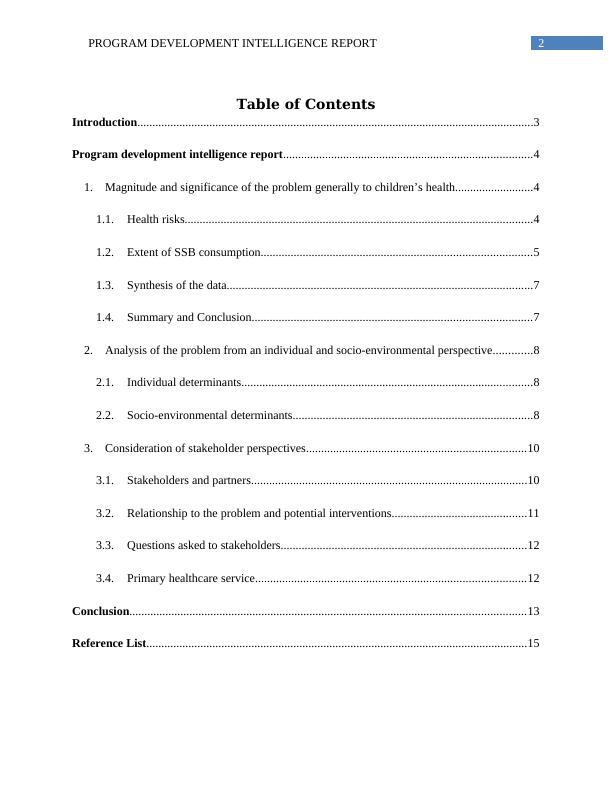Program Development Intelligence Report
Added on 2020-03-16
19 Pages5154 Words27 Views
End of preview
Want to access all the pages? Upload your documents or become a member.
NUTD 9226: Public Health and Community Nutrition
|28
|7044
|85
Sugar Sweetened Beverages and Externalities Sugar
|8
|1984
|21
Nutrition and Society of the Aboriginal People
|8
|1671
|312
The total Australian population
|9
|2116
|13
Curbing rise in obesity and overweight in Western Australia in indigenous children living in regional areas
|10
|2002
|2
Social Cost of Sugar Sweetened Beverages Report 2022
|6
|2082
|12



